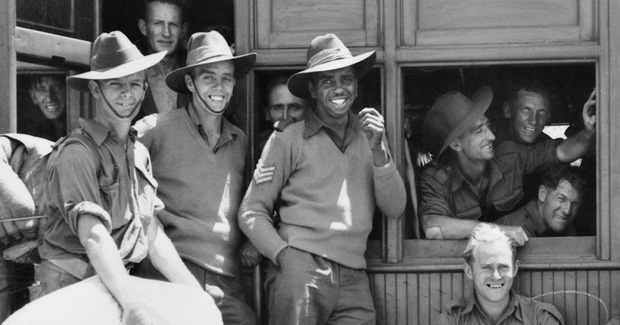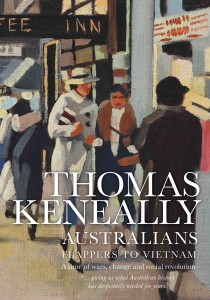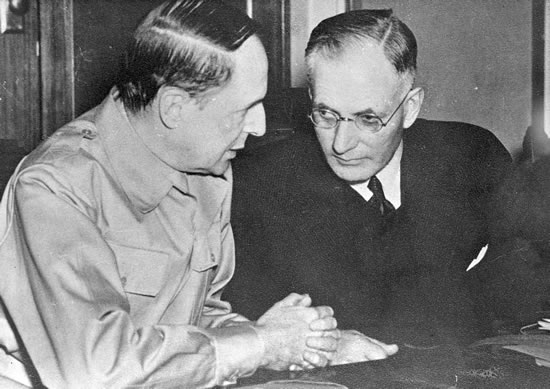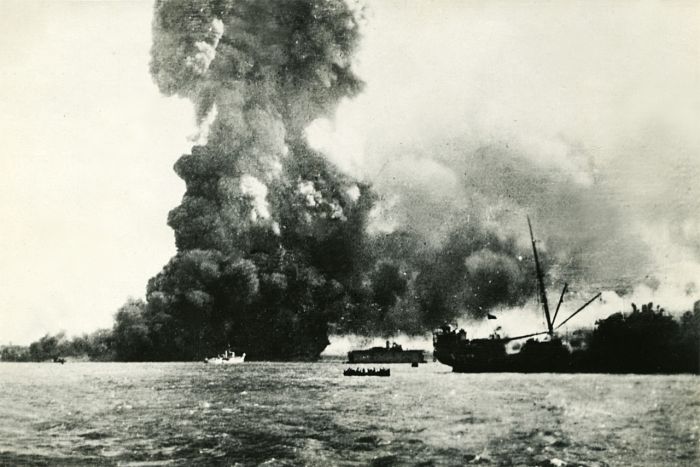The post last chance to book appeared first on .
]]>The Petrov Affair. Robert Menzies. Maralinga. The Vietnam War. Mass immigration…Australia emerged from World War 1 into several decades of profound change, and Thomas Keneally charts it all in Flappers to Vietnam, his third book in his series Australians.
Come and celebrate Tom Keneally’s vibrant and robust telling of our recent history over a lunchtime conversation with Kerry O’Brien. As well as their love of history and politics Tom and Kerry share an Irish heritage, a love of rugby, food and fine conversation. This is an absolutely not-to-be-missed event.
Book tickets on [email protected] or phone: 66392105
______________________________________________________
Saturday evening November 29 at 5.00 pm
Bob Carr and Thomas Keneally ‘In Conversation’
How Gough Whitlam changed the face of Australia.
A discussion about life, literature, history and politics
Booker Prize winning author Thomas Keneally, and ex-Premier of New South Wales and Federal Foreign Minister for Australia, Bob Carr will be in Lennox Head this month to celebrate the launch of Tom Keneally’s latest book, Flappers to Vietnam the third in his series Australians.
To celebrate VERANDAH MAGAZINE publisher Candida Baker is hosting a special evening event at the Lennox Cultural and Community centre on Saturday, November 29th from 5pm.
Bob Carr, whose book, Diary of a Foreign Minister is a wide-ranging look at Australia’s place on the world stage of politics, will talk with Tom and MC Candida about the changes they have both seen in Australia in the past 40 years. Bob Carr and Tom Keneally will entertain, provoke and amuse us in an evening that is both a tribute to their careers – and to Gough Whitlam, the Prime Minister who truly changed the face of Australia.
In Sydney, demonstrators lay down in numbers in front of Johnson’s motorcade, and Askin cried to the driver, ‘Run the bastards over.’
Thomas Keneally, Flappers to Vietnam
History teases us and jokes with us; the universe is loaded with paradox; and the rate of change sometimes exceeds our imaginations.
Bob Carr, Diary of a Foreign Minister
Where: Lennox Cultural and Community Centre,
Mackney Lane, Lennox Head.
When: Saturday 29th November, 5.00 pm.
Limited bookings. Book your seat at: https://bobcarrandthomaskeneally.eventbrite.com.au
Or purchase tickets from Lennox Bookmark, 2/66 Ballina Street, Lennox Head: 66875273
The post last chance to book appeared first on .
]]>The post Thomas Keneally’s story of ‘us’ appeared first on .
]]>
The 2/7th Infantry Battalion, including Sgt Reg Saunders, wait at a troop train in QLD, 1943. (Credit: Australian War Memorial)
Flappers to Vietnam, The third book in Thomas Keneally’s series Australians is a fascinating look at a broad sweep of history covering two wars, the beginning of a third, and the seeds of decades of cold war, writes Digby Hildreth.
Aboriginal soldier Reg Saunders, from Framlingham, Victoria, hid in the White Mountains of Crete for months after the German army invaded the island in 1941. He was later secreted aboard a fishing trawler named the Hedgehog and taken to Egypt.
Saunders got back home and served as a platoon commander in New Guinea until 1944 – the first Aborigine to be commissioned as an officer. He also fought in Korea, where he was a commanded a company. His brother Harry was killed in New Guinea in 1942 while attacking enemy positions at Gona.
The headline title of Thomas Keneally’s magisterial history is Australians: in other words, the story of us. The subtitle of the third volume, Flappers to Vietnam, defines the start and finish of the half-century examined here: the euphoria at the conclusion of the war to end all wars and the beginning of the deadly quagmire of war in south-east Asia. One of the intriguing aspects of the book is that Keneally is more interested in the lives of rank and file characters such as Saunders than he is in the higher echelons. Harry Saunders appears about a quarter of the way through this dense and detailed tome, fighting in the Desert War, and reappears much later in the Pacific theatre.
It’s a typical Keneally technique: to relate as much of the experience of as many ordinary men and women as he can pack in, breathing life into the political principles, aesthetic theories, moral beliefs and ideas of nationhood that were challenged by the upheavals of the age.
The indefatigable Keneally was explicit about his approach earlier this year: “I’m fascinated by obscure figures who show the whole sweep of an event … although I mention generals, I’m interested in lieutenants and downwards,” he said.
As a result, these pages teem with life, with characters good, bad and ugly – but never indifferent, illustrating the turbulence and fractures of the era and how ‘obscure’ Aussie men and women dealt with them.
No history, however, could be comprehensive without a detailed look at the pollies and the top brass, but even here Keneally’s interest is primarily in the human being behind the public persona.
So we see wartime PM John Curtin, whose fighting of (and winning) the war cost him his health and his life. Hyper-sensitive, tormented by the suffering of others, idealistic, driven, he would lose himself on long night-time walks around Canberra in attempts to shore up his failing psychology.
Keneally clearly has a soft spot for the doomed Curtin, but is less sympathetic towards some of those the poor man had to stand up to on behalf of Australia, especially the ‘narcissist’ Douglas MacArthur, and Churchill, with whom he grappled frequently over the question of bringing Australian troops back from the Middle East and Europe to defend their own country from the advancing Japanese.
World War II was at the chronological heart of the century, and with the fall of Singapore, the war, with its dramas of life and death, suffering and heroism, provides the beating heart of this volume. The threat was very near but, despite our era’s obsession with ‘terror”’ it takes some imaginative effort to comprehend how truly terrifying it must have been for Australians to learn about the Japanese bombing of Darwin, Broome and half a dozen other towns in 1942, with the loss of hundreds of lives.
Keneally’s skill is to evoke that fear, which was perfectly reasonable, after all, given that everyone who went to the ‘flicks’ had seen how the sons of Nippon treated their enemies, civilian as well as military, and that the bombing raids were seen, understandably, as a prelude to invasion.
There is plenty to learn and enjoy here about the social, cultural and political changes of the Twenties – the theatre, the struggle to create ‘an Australian art’, the rise of fascism and communism, the increasing demands for recognition by women and Aborigines – but it is the inexorable movement of events towards the carnage of World War II that engages and bewilders. The White Australia Policy and Billy Hughes’ obstruction of a racial equality clause in the Treaty of Versailles are apportioned a chunk of blame for this. Keneally even risks asking a ‘necessary but almost blasphemous question’: could the barbarism of the Japanese soldiers have been because they were ‘specifically indoctrinated’ about the policy? Perhaps such questions are merely a function of Keneally’s desire to see the whole picture of history, to understand and rescue the human from the bestial.
Racism generally led to all sorts of absurd restrictions and outrageous injustices, and must have hampered Australia’s fighting capacity. Despite the experience of the Saunders brothers, Aborigines were initially excluded from combat forces, and were even feared as possible collaborators; black American troops were ghettoised in Brisbane, beaten by military police and even shot dead. Understandably, they rioted.
Keneally charts the shifting fortunes of the darker ideologies of the day – communism and fascism – including after the war, and the emergence of less violent but more meaningful ruptures and rifts in the nation: the demands of women and Aborigines for equality and autonomy, the breaking up of the colonial subservience to Britain and the emergence of a new buddy/master in the United States, an equally problematic alliance summed up rather childishly by Harold Holt with his ‘all the way with LBJ’ line. Holt’s drowning concludes this chapter of our history.
Keneally reports on these cataclysms in the geopolitical life of the adolescent nation as it strove for identity and a global voice through the men and women at its centre and on its edges, and he does so with a journalist’s eye for detail and a humanitarian concern for the individual lives, saved, restored but too often wasted in the process.
His history is a magnificent read but does show some signs of too much haste. Some sentences jar: ‘The Papuan bearers collapsed on the track, sick, and some deserted, escaping that muscle-splitting, breath-sapping and health-depleting track.’ He never fails to mention if someone is of Irish descent and some of the personae seem wheeled out for no good reason other than to show that the researchers could put a name to them.
When Gough Whitlam enters the narrative the epithet ‘young’ attaches itself to him and won’t let go. In two pages he is described as the young lawyer, the young aviator, the young flyer, the young navigator.
And 420 nautical miles does not convert into 780 metres.
But these are minor quibbles in what is a major work, a broad sweep of history covering two wars and the beginning of a third, and the seeds of decades of cold war.
Finally it is the social and cultural wars that provide the web and woof of this story, and the people driving them, which make this an indispensable book.
AUSTRALIANS: Flappers to Vietnam By Thomas Keneally
Allen & Unwin, hard cover, 640 pp, rrp: $49.99
Thomas Keneally ‘In Conversation’ with Bob Carr
Where: Lennox Cultural and Community Centre, Mackney Lane, Lennox Head.
When: Saturday 29th November, 5.00 pm.
How: Book Tickets at: https://bobcarrandthomaskeneally.eventbrite.com.au
The post Thomas Keneally’s story of ‘us’ appeared first on .
]]>

